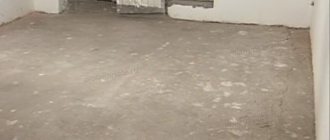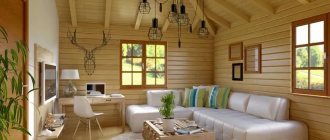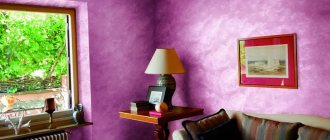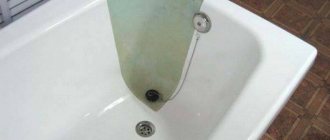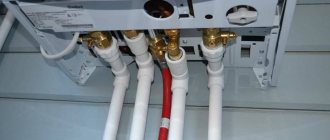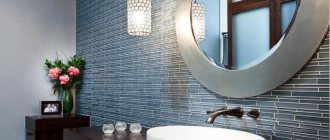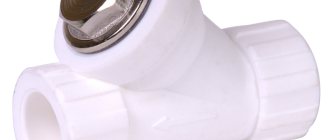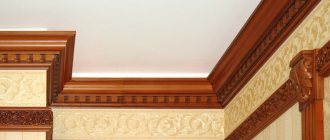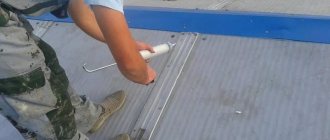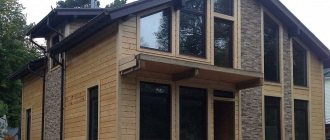The floor of the terrace experiences significant loads during operation. Temperature changes, rain, snow, soil deposited on the soles - all this negatively affects the floor covering and reduces its service life. Therefore, when arranging, in addition to the criteria of appearance and safety (the coating should not be slippery), it is worth paying special attention to the quality of the material itself from which the floor on the terrace will be made.
In addition to traditional wood and ceramic (stone) coatings, more modern composite materials can be used in the floor construction process. Thus, wood-polymer decking does not require the use of additional products or impregnations to protect against external influences, since it was created specifically for terrace floors. Ceramic and paving tiles are also quite wear-resistant materials. But, unfortunately, such coatings do not always fit perfectly into the architectural concept of the house. A wooden or well-imitation wood terrace covering will always be more natural and natural.
To determine the most suitable material for covering the terrace, you should familiarize yourself with the features of each of them separately. It would also be useful to study the requirements for terrace covering, technologies and installation methods. The recommendations discussed in the review will be very useful to you, especially if you are installing the floor yourself.
Requirements for coating on an open terrace
A terrace is an open or roofed area with a foundation and floor covering, located next to the house or separately from it.
Based on this, it can be concluded that the coating on the open terrace is exposed to:
- moisture from rain, fog or snow;
- direct sunlight;
- wind and other weather phenomena.
Based on this, we conclude that decking for the terrace should:
- repel moisture;
- be resistant to constant exposure to ultraviolet rays;
- easily secured to the foundation surface without leaving large gaps for wind damage.
Otherwise, the covering for the open terrace will very quickly deteriorate under the influence of external factors and become unusable.
When choosing a flooring option for a terrace, it is also important to take into account the characteristics of the region, especially average annual precipitation and temperatures. Not every material can withstand a cold winter.
Waterproofing rules
The essence of the process: cutting off the screed or heat insulation from moisture. A layer of waterproofing is laid. The materials used are roofing felt, glassine, and special membranes. They are laid from below, under screed or insulation.
Waterproofing is carried out when installing the subfloor. The insulator layer must be airtight, so the installation is done overlapping, and the joints are taped with construction tape. If we are dealing with wooden flooring on a joist system, then waterproofing is only needed at the points where the wood comes into contact with the foundation.
To summarize, we note that there are enough materials for arranging the floor. Which one to choose depends on the features of the veranda, budget and expected result. The classic option is wooden flooring, modern and simple is rubber coating, complex but durable is self-leveling flooring.
Key points of covering installation
It is necessary to choose what to cover the terrace with even before the construction of the building - depending on the chosen covering, you will need to choose the right foundation. For linoleum, tiles, and rubber floors, you will need a full foundation with tight lining or pouring concrete. For decking boards and similar materials, columnar boards with logs are also suitable.
The easiest option to construct is a columnar foundation with timber frame. Wooden panels can be placed on top of such a frame, which will allow you to put almost any floor covering on it. Belt and fully flooded are much more difficult to work with.
Before laying the floor on the open terrace at the dacha, it is necessary to waterproof the foundation. Regardless of the material chosen, excessive moisture underneath will lead to its rapid destruction.
Waterproofing can be done either with special materials created for certain coatings, or with the help of ordinary polyethylene film. The main thing is to make sure that there are no holes or cracks in the film - through them condensation will penetrate into the coating.
When choosing a floor covering, it is not necessary to limit yourself to just one material - for example, the entire terrace covering can be made of boards, and the points of contact with the pool or exit to the terrace can be made of stone or tiles.
Further installation of the floor for the open terrace depends on the material. The most important rule is the need to check the level - the smoother the floor is, the better its performance properties will be.
If the work uses materials that require additional coating, then you should not refuse this - wood treated with an antiseptic, stain and varnish will last much longer than wood that has not been treated. This process is discussed in more detail in our separate article about what finishing a terrace is and how to do it correctly.
No. 3. Concrete tiles/slabs
These materials can also be used to pave the terrace area. The base is cement-sand. If we are talking about a raised concrete platform, then the slabs can be fixed with glue for external work. Although it is better to use cement-sand mortar, especially if the slabs are large.
Paving slabs on the terrace
A large area can be easily covered with large concrete slabs in record time. Elements can be square or rectangular. Popular sizes:
- 300x300 mm;
- 600x450 mm;
- 500x500 mm;
- 600x600 mm.
Now the surface of concrete slabs can imitate ceramics or natural stone. Particularly popular is a coating with an original figured surface (for example, with lines that divide a fragment into several “bricks”).
Laying paving slabs
Smaller tiles are available in a larger variety. The shape can be any, as well as the surface.
pros
- high strength;
- ease of repair/dismantling;
- long service life (at least 25-30 years);
- ease of installation;
- a wide range of colors, textures, shapes, dimensions;
- the ability to create various ornaments and patterns.
Minuses
- the need to maintain a slope during installation;
- difficulty of choice;
- slipperiness of the coating in winter;
- uneven settlement (if the base is prepared incorrectly).
Wood-look paving slabs
On a note! Coloring pigments are introduced into concrete, thanks to which the tiles can have different colors.
Tiles can have any color
Paint for a wooden terrace or what to paint the floor with
Paint for wood decks is divided by area of application. In addition, not every material can be effectively painted - for example, linoleum or rubber will not hold paint, and the effect itself will be rather negative.
Wood is most often painted - it requires a coating for protection. The most effective for wood are:
- stain;
- varnish;
- wax impregnation.
Separately, we can highlight latex paint for the floor on the terrace - it is perfect for almost all materials, except stone and linoleum.
stain
The stain is a special tinting impregnation for wooden floors on the terrace and similar materials. The stain contains an antiseptic that protects the material from the development of pathogenic and putrefactive bacteria, as well as a water-repellent component that makes the wood more resistant to dampness and the painting itself.
With the help of stain, it is possible to imitate various types of wood for the floor on the terrace, even those that are not usually used in construction - walnut or alder.
The stain works well on polished wood, WPC and other wood materials. After covering with stain, the floor can be varnished - it will fix the effect. There are also varnish stains on sale that perform two tasks at the same time.
Varnish
Deck varnish is a clear or tinted finishing coat on a variety of surfaces. Varnishes are applied both to wood and to other materials in which impregnation is possible. Under the varnish, you can either apply another paint, which sets the main color, or paint clean material with it.
An important condition when working with varnish is the absence of roughness on the surface and dust - otherwise, after coating with varnish, each speck of dust will appear as small tubercles, extremely noticeable to the touch.
When processing wood, a combination of varnish and stain is reliable protection against various damages. In this way, it is possible to preserve even the most fragile rocks, which under normal conditions could not serve as a floor covering.
Wax paint
Wax paint for a terrace is an excellent method to get rid of excessive slipperiness of the coating. It was created as a method of protecting wooden coverings from ultraviolet rays and rain.
The main element in this patio floor paint is wax. After application, the solvents erode and it forms a thin crust, which perfectly protects wood and other materials from negative environmental factors.
Latex paint
Latex paint is not exactly paint in the usual sense - it is a polymer composition that, when hardened, forms a coating similar in appearance to rubber. This paint can be used to treat almost any surface on the terrace.
The main advantage is complete waterproofness, which is ensured by the presence of latex in the composition. The coating does not fade over time and does not require much care - it can simply be washed with water from a hose or car wash.
The greatest use of latex coating is in the treatment of floor areas on the terrace next to pools or other bodies of water.
No. 2. Ceramics
Most suitable for terraces:
- ceramic tiles (but only those intended for outdoor use);
- porcelain stoneware;
- clinker.
Types of ceramic products for paving terraces
As for ceramic tiles , they must be intended for outdoor use and be frost-resistant. The surface can be structured, corrugated. But a shiny glazed coating, despite its attractiveness, cannot be laid on the terrace. The abrasion class should be IV-V.
How to choose ceramic tiles
And a material such as porcelain stoneware combines the advantages of granite and ceramics. There are many design options; the material can imitate various natural materials - leather, natural stone, wood. But it is important that the material is unpolished and rough. Porcelain tiles are laid on a concrete slab using special frost-resistant glue.
Porcelain tiles
Paving stones (clinker) are used for laying on the floor of a terrace on screed/ground. The material is, in principle, burnt brick; it does not absorb moisture and is resistant to low temperatures. The colors can be very different, the shape can be rectangular/square (by the way, the edges can be beveled or straight).
Terrace in structural tiles to resemble stone paving stones
pros
- ease of repair (damaged tiles are easy to replace);
- frost resistance;
- ease of care;
- long service life;
- large selection of colors and shapes;
- resistance to ultraviolet radiation and precipitation.
Minuses
- slipperiness when icing (this problem can be corrected with non-slip rubber mats);
- the need to maintain a slope during installation (otherwise water will accumulate on the floor);
- poor impact strength;
- the possibility of deformation of the coating due to moisture seeping into the seams.
Clinker tiles for terraces
On a note! Ceramics are laid on raised terraces, the base of which is a reinforced concrete slab with a leveling screed. The tiles are fixed with a special glue intended for external work.
Frost-resistant tile adhesive for exterior use
Prices for tile adhesive for exterior use
tile adhesive for exterior use
Key points when painting the floor
Before treating with any dye, the surface must be cleaned of dust and grease. Dust will leave extra lumps that will be very noticeable, and grease will prevent the paint from sticking to the surface.
In addition, when working on an open terrace, you need to check the weather forecast - you should not paint before the rain, as it will wash off the coating, and after painting you cannot cover it with anything for 6-8 hours.
Among the tools you need to have several brushes - synthetic or natural (in fact, this does not really matter, since both types are similar to each other), a paint bath.
It is important not to overdo it with the amount of paint - the excess will either accumulate in the recesses of the coating or leave smudges that will take longer to dry and spoil the appearance of the work on the terrace.
When working with latex paint, you will need a special leveler - a spatula with a long handle. Work with it is carried out only in dry weather - rain, even a little, will ruin the drying latex, which will require removing it and painting the surface again.
No. 4. Stamped concrete (also known as stamped concrete)
The surface of such concrete can imitate different materials - wood, parquet, ceramics, paving stones, natural stone, pebbles, etc. The material is laid on raised terraces with a reinforced concrete base.
Stamped concrete
pros
- long service life;
- ease of care;
- high strength;
- imitation of any materials;
- the fact that moisture does not seep under the concrete covering.
Minuses
- installation duration;
- strong heating in summer;
- slipperiness of the coating (if smooth dies are used).
Stamped concrete has its pros and cons
Stamped concrete is the most modern of the options described in the article. As a result, the coating looks like expensive or antique paving stones. What is characteristic is that the material retains all the properties of concrete.
Final work
Finally, you will need to smooth out the tile seams. This work involves filling the seams with a special mixture. This mixture is called fugue. In stores you can find different types of this mixture, but for concrete tiles laid on the terrace, frost-resistant street fugue is suitable. Filling the seams with fugue is quite simple, so even a child can handle this job. The main thing is to remove excess grout in a timely manner using a rag.
Trimming some tiles, if necessary, can be done using a grinder. It is important to use a circle working on the tiles. Before trimming, you need to mark the cut location with a pencil. Cutting with a grinder must be carried out as carefully and calmly as possible, because the material will easily break under significant mechanical stress.
You can start using the new floor covering immediately after the adhesive has completely cured. The exact curing time for the glue is indicated on the packaging. It is not recommended to immediately load the terrace with furniture and other heavy objects.
Video description
How to lay clinker, see the following video:
Rubber, linoleum and plastic
These are the most modern materials. Rubber looks like a rubber sheet and is available in the form of a roll or individual slabs that need to be glued. Its main advantage is its high strength and moisture resistance. It is suitable for verandas located near the water.
Linoleum is often used as a covering for verandas and terraces. It is chosen because of the variety of colors, ease of installation, reliability and low cost. However, low-quality material may begin to fade or deteriorate. It is also easy to cut.
The best manufacturers
We offer a brief description of the largest and most popular manufacturers of ceramic tiles in Russia.
Keramin
European manufacturing company. It has the largest sales volumes in the ceramics market. Specializes in the production of ceramic bricks, granite, tiles, sanitary ceramics. All Keramin products have registered certificates of conformity, and sanitary ceramics have a certificate of hygienic registration, environmental ISO 14001-2005.
Photo: Keramin tiles
Finished products undergo constant quality control. New equipment has been installed in the workshops, thereby reducing the duration of the technological process and increasing production volumes.
Kerama Marazzi
Domestic manufacturing plant with a wide network of distribution companies. Founded in 1988 in the city of Orel.
Kerama Marazzi produces ceramic tiles and granite, borders, steps, panels, mosaics and other elements. The company's catalog contains over 2000 items.
The quality of products is confirmed by compliance with international, state standards and requirements, and expert opinions. The Marazzi factory also produces many thematic collections of ceramics. Applications for individual orders are accepted.
Stone Age
Russian manufacturing plant. It has been producing paving slabs for more than 12 years. In 2012, the entire production line was re-equipped to European standards. The ColorMix system was introduced to make an analogue of imported clinker. Models of floor slabs with granite, quartz, and basalt chips have been added.
Gothic
Domestic tile manufacturer. The factory was founded in 2005. “Gothic” products are often called mosplite, since many iconic places in Moscow are paved with it (Alexandrovsky Garden, Old Arbat). German HESS equipment is installed in the workshops. The tiles are created using the semi-dry vibration pressing method. Manufactured products are divided into PREMIUM and PROFI classes. The first has a high cost and imitates natural stone in appearance, the second is standard sidewalk tiles in different colors.
Popular forms, markings
When buying tiles in large quantities, pay attention to the characteristics that are printed on top of the package.
It states:
- size;
- thickness;
- form;
- color;
- quantity;
- total weight (sometimes).
Popular shapes:
- rhombus;
- lily;
- coil;
- antique;
- snake;
- rondo cross;
- scales;
- mosaic, etc.
Photo: variety of shapes
And also there is an abbreviated classification:
- Ш – hexagonal;
- K – square;
- F – figured;
- P – rectangular;
- D – tiled border;
- ED – decorative elements.
The markings of different manufacturers may not be the same, so it is recommended to check all the details with the seller.
No. 5. Stone tiles
Thanks to the use of stone slabs, the adjacent area is harmoniously combined with the terrace. If the terrace is a raised reinforced concrete slab, the facing tiles can be thin, no more than 1-2 mm in thickness. You can also finish the terrace on the ground, but the slabs should be larger, about 3-6 mm. In this case, laying is done on a sand or crushed stone bed.
Stone slabs for terrace cladding
pros
- attractive appearance;
- beautiful aging, the color of the material does not change due to abrasion;
- long service life.
Minuses
- ease of contamination of seams;
- strong heating of the stone in hot weather;
- possibility of cracks appearing upon impact.
Natural stone tiles
When choosing stone tiles, be sure to inquire about their level of abrasion and moisture resistance. The most stable rocks are granite, shale, and basalt. If the terrace is covered, preference can be given to limestone or sandstone.
